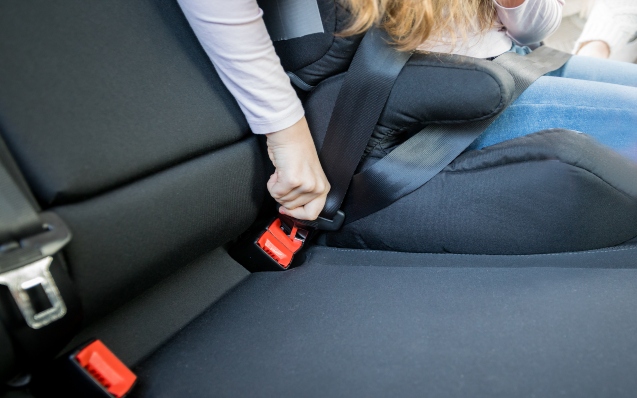Car Accidents and Car Seats
Posted on 26th January, 2022

A reasonable question for a parent to ask after an auto accident is, "Should I replace my child's car seat?"
In short, if you were involved in a moderate or severe accident: Yes. But what if the damages to your vehicle were minimal?
The NHTSA (National Highway Transportation Safety Administration) acknowledges it may not be necessary to replace a car seat after a minor incident.
While this may be true, we believe it is essential to carefully consider the details of the accident and the car seat itself, even if you cannot identify any visible damage.
For example, here are some questions you may want to ask yourself:
- Was There Notable Damage to Your Vehicle? If the impact from the accident was forceful enough that your car was towed from the scene, it would be shrewd to replace the car seat even if no damage can be seen with the naked eye. Keep in mind that the condition of the vehicle doesn't always match the severity of the accident. While a person can drive away from the scene, they may opt to replace the car seat to ensure their own peace of mind and their child's safety.
- Were You or Others in Your Vehicle Injured? Little ones are often unable to articulate their injuries to their parents. Still, if you or others in your car were injured, but your little one was fine, then the car seat was critical in keeping your child secure to lessen the impact on his or her body. Although it's a comfort to know the car seat performed its function, the impact may have altered the integrity of the seat itself and thus warrants a replacement.
We also strongly encourage you to review the car seat manufacturer's guidelines as these may specify what to do after an accident. They could also provide any warranty information that may apply to your situation. There are times when an insurance company will preemptively issue payment for the damage of a car seat if they are aware that a child was in the car with you. You can inquire about this form of compensation when discussing the property damage of the accident with the insurance adjuster.
Next, we will discuss some of California's safety requirements when driving with minors, the possible defects that can occur in car seats, and how fault is determined in an accident when there is suspicion that the car seat malfunctioned.
4 California Requirements for Child Safety In Cars
- In California, car seats that are rear-facing are mandatory for all youngsters who weigh under forty pounds and/or are shorter than forty inches.
- If a child is under the age of eight, they must either be in a booster seat or car seat that is placed in the vehicle's back seat.
- Booster seats are needed for children between the ages of eight to and twelve that are under 4'9" tall. Although California Vehicle Code Section 27363 states that a seat belt must secure them, a booster seat is better protection for children of these ages.
- Children aged 16 or older are required to utilize seat belts under the mandatory law on California Seat Belts.
8 Common Defects of Child Safety Restraint Systems
Whether your child is secured in a car seat designed for infants or toddlers, a range of defects and compatibility issues can pose a severe risk to children in a collision. A few examples are as follows:
- Faulty Chest Clip: A child can be ejected from the vehicle when the chest clip is located too low on the body.
- Adjusters Failing: The adjusters on a child safety seat are designed to secure a child in their seat. When they do not function as designed, the straps can pose a risk of injury.
- Faulty Buckles: When the main safety buckle that keeps a child in the car seat gets stuck or is too loose, a child can face the risk of being injured. They could become stuck when a rescue attempt is made to remove them from the vehicle, or they can be ejected and experience a serious injury when the buckle becomes detached.
- Mislabeled Shoulder Harness Slots: Manufacturers have at times failed to adequately label these slots, so the car seat is secured improperly.
- The Angle of Recline: CChild safety seats should be properly positioned as often demonstrated in the guidelines that the manufacturer provides on the seats or in the provided manual.
- The Fracturing of Plastic Shell: If the plastic material of the car seat is manufactured or constructed from subpar materials, the safety equipment will not provide the expected benefits. Also, cheap materials can be susceptible to cracking or breaking under the force of a collision.
Defective Car Seat Injuries: Who Is at Fault?
Under Product liability law, in California, individuals that suffer an injury due to a mislabeled product have the right to pursue a claim against the manufacturer, supplier, distributor, or retailer. To hold such parties at fault, here are some examples of what must be proved:
- There was improper inspection or testing of the product before placing the car seat on the market.
- The at-fault party failed to discover and disclose features or vulnerabilities making the car seat unsafe.
- There was negligence in providing a proper amount of warnings with regard to the risks of hazards associated with using the car seat.

